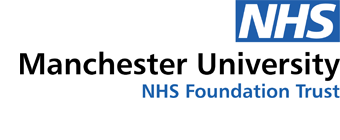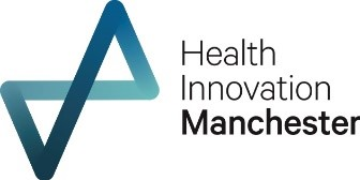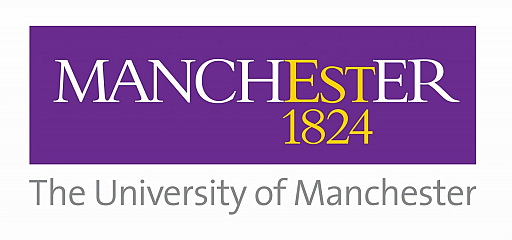The NIHR Infrastructure Doctoral Training Camp: the Inside Scoop
This year, I was lucky enough to be selected from the NIHR Manchester Musculoskeletal Biomedical Research Unit to attend the annual NIHR Infrastructure Doctoral Training Camp. The three day camp is held at Ashridge Business School and I arrived expecting an old 70s-build concrete block, instead to be greeted by a gothic castle, adorned with oil paintings and tapestries!
What is the doctoral training camp?
The camp is largely attended by PhD students and the first day was mainly focused on presenting our work and networking. I presented a poster on my research, which focuses on defining a treatment target for childhood arthritis. It uses data from 1500 children and young people from up and down the country recruited to the Childhood Arthritis Prospective Study (CAPS). I was pleased to have a lot of interest from students and academics working in musculoskeletal conditions and those working in other childhood-onset diseases. At the end of the day, we were organised into nine groups of seven; these would be our fellow co-applicants/family for the duration of the course.
The task was this: Applying for a maximum £500k, design and write a grant proposal, with full costings, for a condition that affects the general public. You have 24 hours.
The importance of team work
That first evening, we tried to define the research question. My first learning experience was that working in a multidisciplinary team is challenging. PhDs tend to be quite independent and whilst I was used to consulting with various experts, I had never had to work in such close proximity to so many people from different backgrounds. Our team comprised of quantitative and qualitative researchers, doctors and nurses, basic scientists to epidemiologists. We struggled for some time to define our question, which started off looking at mental health in the elderly and, after electing a wonderful team leader in Gurdeep Mannu, ended on a peer-led exercise intervention in secondary schools. The real work began on the second day.
A-Z of grant application writing
This is a shortlist of activities crammed into that second day:
- Properly define a research question
- Attend sessions on how to define a question, panel interviews and PPI
- Book in and attend 10 minute slots with various experts ranging from finance to qualitative methods
- Justify your project to the various visitors sprung on you throughout the day
- Deal with press photographs
- Prepare a presentation to be given the following day
- Write an entire grant proposal
To say that the second day was intense would be a huge understatement. At one point I had come back from an excellent session on panel interviews, lunch in hand, sat down, had one fork of pasta, turned for a photo and leapt straight back up for our session with the quantitative expert! Although there was a lot to do, I learned an incredible amount from the sessions and short talks with the experts. I don’t think anyone knew the first thing about finance before the course and by the end of that day Jamie McCarthy had a full list of equipment and PPI costs in addition to all staff members’ salaries and what level and percent of their time we would require for our project.

Follow the instructions!
As the countdown began to the deadline that afternoon, everyone pitched in to finalise the proposal and we arrived at the hand-in desk with 10 minutes to spare. What we didn’t know was that an extra layer of bureaucracy awaited and our proposal was sent back again and again as only ticks, not crosses were allowed and this page needed to be printed twice etc. If I learned anything from those final 10 minutes it was this: submit way, way in advance. You don’t want to work for 18 months on a project to have it sent back for grammatical errors!
Building new networks
After finishing our presentation for the next day, we all prepared to go back to our rooms and collapse in a heap. However, on our way back, the sports centre was advertising free cycle hire to delegates and our group decided to take advantage and go on a relaxing cycle around the gorgeous grounds. As we cycled through the forest past a herd of deer and a man with three dogs kind enough to snap a picture of us, what we had achieved that day dawned on our group. But, instead of congratulating each other, we thought ahead to the presentation the next day.
The winning pitch
I stood up on that final day, microphone in hand, on the stage in front of a panel and a room of around 100 students, mentors and experts. I talked about the rationale for our project that had been 24 hours in the making, all the fictional PPI we had conducted in its preparation and how we were going to ensure the £414k grant we were asking for would make a real difference to children’s lives and the NHS. At the end of my presentation I was joined by my group, earlier named the ‘Ashridge Angels’ in an apprentice-style naming session, and we fended off questions from the panel, from ‘who cares?’ to ‘aren’t there enough exercise interventions?’.
As the day drew to a close, the winners were announced. Much to our surprise and delight, the winners of the best overall project were the Ashridge Angels! A loud whoop erupted from our amazing mentor Dr Catherine Exley who, in addition to keeping us calm and focused throughout the course, it turned out had somewhat of a competitive streak and was delighted to have beaten her fellow mentors.
Final thoughts
Overall, the NIHR Infrastructure Doctoral Training Camp was a fantastic, intense, exhausting and incredibly worthwhile experience. It has really given me a head start on forming research questions and writing the intricacies of a proposal under extreme pressure. It was an experience not for the faint-hearted, but then neither is a career in academia. I thoroughly look forward to submitting the real deal, hopefully with a little more time, in a few years to come.





